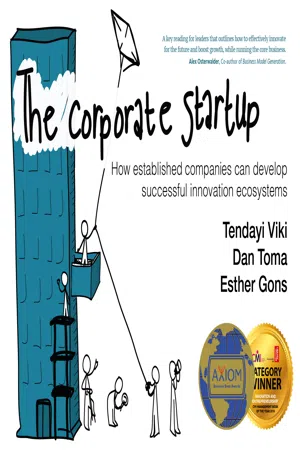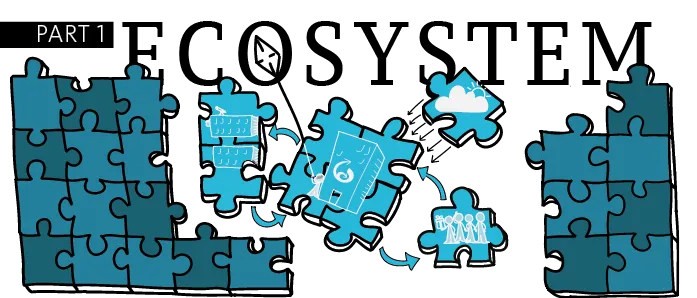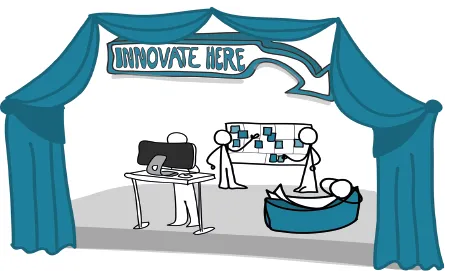
The Corporate Startup
How established companies can develop successful innovation ecosystems
- 300 pages
- English
- ePUB (mobile friendly)
- Available on iOS & Android
The Corporate Startup
How established companies can develop successful innovation ecosystems
About this book
A key reading for leaders that outlines how to effectively innovate for the future and boost growth, while running the core business. - Alex Osterwalder, Co-author of Business Model Generation.
Winner of the 2018 CMI Management Book of the Year Award for Innovation and Entrepeneurship
The Corporate Startup is a practical guide for established companies that aspire to develop and sustain their innovation capabilities. • The world around us is changing rapidly. There is now more pressure on established companies to innovate. • The challenge most companies face is how to develop new products for new markets, while managing their core business at the same time. • The principles and practices outlined in this book provide companies with a blueprint of how to manage innovation while they execute on their core business. • The Corporate Startup provides frameworks, visualizations, templates, tools and methods that can be easily applied to develop new products and business models.
This book helps organisations of all sizes to manage innovation. This playbook uses illustrated step-by- step guides to lead the reader through the processes to create an ecosystem that nurtures innovation at every level in a business. - Jury CMI Management Book of the Year.
Big companies need to innovate or die. The question is how. Companies need a playbook; a process by which they can start the process of transforming their organizations into innovation engines. The Corporate Startup is that playbook. It provides a proven methodology —applying Lean Startup principles and more— for building a culture of innovation. - Ben Yoskovitz, Co-Author of Lean Analytics and Founding Partner at Highline BETA.
Frequently asked questions
- Essential is ideal for learners and professionals who enjoy exploring a wide range of subjects. Access the Essential Library with 800,000+ trusted titles and best-sellers across business, personal growth, and the humanities. Includes unlimited reading time and Standard Read Aloud voice.
- Complete: Perfect for advanced learners and researchers needing full, unrestricted access. Unlock 1.4M+ books across hundreds of subjects, including academic and specialized titles. The Complete Plan also includes advanced features like Premium Read Aloud and Research Assistant.
Please note we cannot support devices running on iOS 13 and Android 7 or earlier. Learn more about using the app.
Information

ECOSYSTEM
[ek-oh-sis-tuh m, ee-koh-]
CHAPTER ONE
Innovation Ecosystem


Why Innovation Fails
Table of contents
- Inhoud
- Praise for The Corporate Startup
- INTRODUCTION Innovation Paradox
- Part 1 Ecosystem
- Part 2 Practice
- About the Authors
- Earlyvangelists